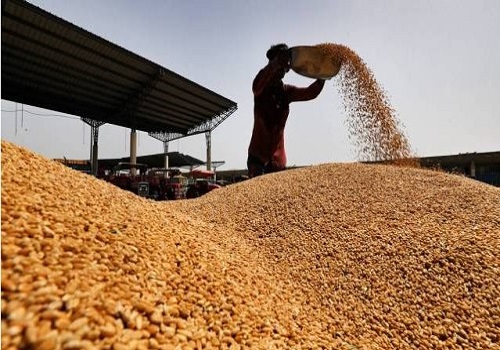Bumper Wheat Harvests Shape Global Markets by Amit Gupta, Kedia Advisory

The 2023/24 U.S. wheat outlook witnesses an 11-million-bushel drop in ending stocks, influenced by decreased supplies and altered usage. Meanwhile, the global wheat landscape transforms with larger supplies, heightened consumption, increased trade, and augmented ending stocks, driven by notable shifts in key producing nations like Ukraine, Russia, and the EU. Amidst this dynamic scenario, India and the EU play pivotal roles in boosting global consumption, while Ukraine emerges as a significant exporter.
Highlights
U.S. Wheat Outlook:
Ending Stocks: Projected 2023/24 U.S. wheat ending stocks are lowered by 11 million bushels due to decreased supplies, which offset reduced use.
Beginning Stocks: June 1 beginning stocks are reduced based on the NASS Grain Stocks report.
Seed Use: Seed use is reduced by 1 million bushels to 64 million.
Feed and Residual Use: All wheat feed and residual use for 2023/24 is unchanged, reflecting disappearance for June-November as indicated by the December 1 and revised September 1 stocks.
By-Class Changes: There are offsetting by-class changes to feed and residual use.
Price Forecast: The 2023/24 season-average farm price is forecasted to be $0.10 per bushel lower at $7.20, based on prices received to date and expectations for futures and cash prices for the remainder of 2023/24.
Global Wheat Outlook
Supplies: Global supplies for 2023/24 are raised by 3.6 million tons to 1,056.5 million on higher beginning stocks and production.
Beginning Stocks in Ukraine: The increase in global beginning stocks is primarily due to revisions for Ukraine, where beginning stocks are raised by 2.2 million tons to 3.5 million.
Production Changes: Production changes in several countries include increases for Russia, Ukraine, and Saudi Arabia, more than offsetting a decrease for China.
Consumption: Global consumption is raised by 1.8 million tons to 796.5 million, mainly due to higher feed and residual use for India and the EU.
India's Consumption: Consumption for India is raised by 1.3 million tons based on greater implied use from the latest government-held stocks reported by the Food Corporation of India.
EU's Consumption: EU wheat consumption is boosted based on larger projected imports from Ukraine, partially offsetting reduced use of feed grains.
World Trade: World trade is raised by 2.4 million tons to 209.5 million on higher exports by Ukraine, Russia, Australia, and Canada, offsetting a decrease for the EU.
Ending Stocks: Projected 2023/24 ending stocks are raised by 1.8 million tons to 260.0 million, primarily due to increases for the EU and Ukraine.
Conclusion
As U.S. wheat stocks experience a dip, global dynamics signal a robust and ever-changing market. The surge in global supplies, altered consumption patterns, and dynamic trade relationships underscore the resilience and adaptability of the wheat market. Producers, traders, and consumers must stay agile in navigating this evolving landscape, with a keen eye on regional shifts that shape the world's wheat economy.
Above views are of the author and not of the website kindly read disclaimer























